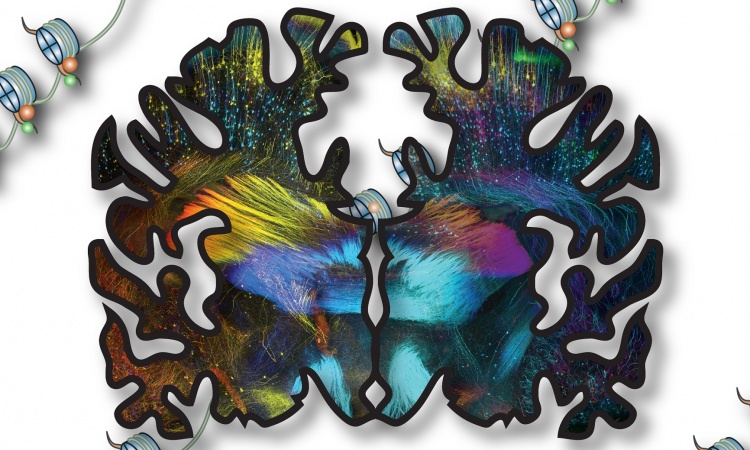Image source: Adobe Stock/Matthieu
News • In between neurons and astrocytes
Neuroscientists discover new kind of brain cell
The two major families of cells that make up the brain, neurons and glial cells, secretly hid a hybrid cell, halfway between these two categories.
For as long as Neuroscience has existed, it has been recognized that the brain works primarily thanks to the neurons and their ability to rapidly elaborate and transmit information through their networks. To support them in this task, glial cells perform a series of structural, energetic and immune functions, as well as stabilize physiological constants. Some of these glial cells, known as astrocytes, intimately surround synapses, the points of contact where neurotransmitters are released to transmit information between neurons. This is why neuroscientists have long suggested that astrocytes may have an active role in synaptic transmission and participate in information processing. However, the studies conducted to date to demonstrate this have suffered from conflicting results and have not reached a definitive scientific consensus yet.
By identifying a new cell type with the characteristics of an astrocyte and expressing the molecular machinery necessary for synaptic transmission, neuroscientists from the Department of Basic Neurosciences of the Faculty of Biology and Medicine of the University of Lausanne (UNIL) and the Wyss Center for Bio and Neuroengineering in Geneva put an end to years of controversy. The team shares their insights in the journal Nature.
Our next studies will explore the potential protective role of this type of cell against memory impairment in Alzheimer's disease, as well as its role in other regions and pathologies than those explored here
Andrea Volterra
To confirm or refute the hypothesis that astrocytes, like neurons, are able to release neurotransmitters, researchers first scrutinized the molecular content of astrocytes using modern molecular biology approaches. Their goal was to find traces of the machinery necessary for the rapid secretion of glutamate, the main neurotransmitter used by neurons. "The precision allowed by single-cell transcriptomics approaches enabled us to demonstrate the presence in cells with astrocytic profile of transcripts of the vesicular proteins, VGLUT, in charge of filling neuronal vesicles specific for glutamate release. These transcripts were found in cells from mice, and are apparently preserved in human cells. We also identified other specialized proteins in these cells, which are essential for the function of glutamatergic vesicles and their capacity to communicate rapidly with other cells," says Ludovic Telley, Assistant professor at UNIL, co-director of the study.
Next, neuroscientists tried to find out if these hybrid cells were functional, that is, able to actually release glutamate with a speed comparable to that of synaptic transmission. To do this, the research team used an advanced imaging technique that could visualize glutamate released by vesicles in brain tissues and in living mice. "We have identified a subgroup of astrocytes responding to selective stimulations with rapid glutamate release, which occurred in spatially delimited areas of these cells reminiscent of synapses," says Andrea Volterra, honorary professor at UNIL and visiting faculty at the Wyss Center, co-director of the study.
In addition, this glutamate release exerts an influence on synaptic transmission and regulates neuronal circuits. The research team was able to demonstrate this by suppressing the expression of VGLUT by the hybrid cells. "They are cells that modulate neuronal activity, they control the level of communication and excitation of the neurons," says Roberta de Ceglia, first author of the study and senior researcher at UNIL. And without this functional machinery, the study shows that long-term potentiation, a neural process involved in the mechanisms of memorization, is impaired and that the memory of mice is impacted.
The implications of this discovery extend to brain disorders. By specifically disrupting glutamatergic astrocytes, the research team demonstrated effects on memory consolidation, but also observed links with pathologies such as epilepsy, whose seizures were exacerbated. Finally, the study shows that glutamatergic astrocytes also have a role in the regulation of brain circuits involved in movement control and could offer therapeutic targets for Parkinson's disease. "In between neurons and astrocytes, we now have a new kind of cell at hand. Its discovery opens up immense research prospects. Our next studies will explore the potential protective role of this type of cell against memory impairment in Alzheimer's disease, as well as its role in other regions and pathologies than those explored here," projects Andrea Volterra.
Source: University of Lausanne
07.09.2023











